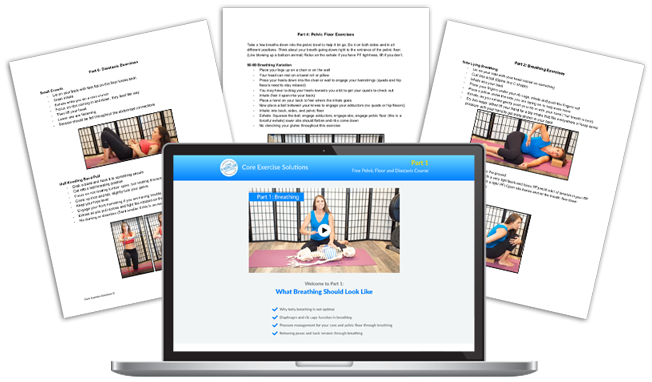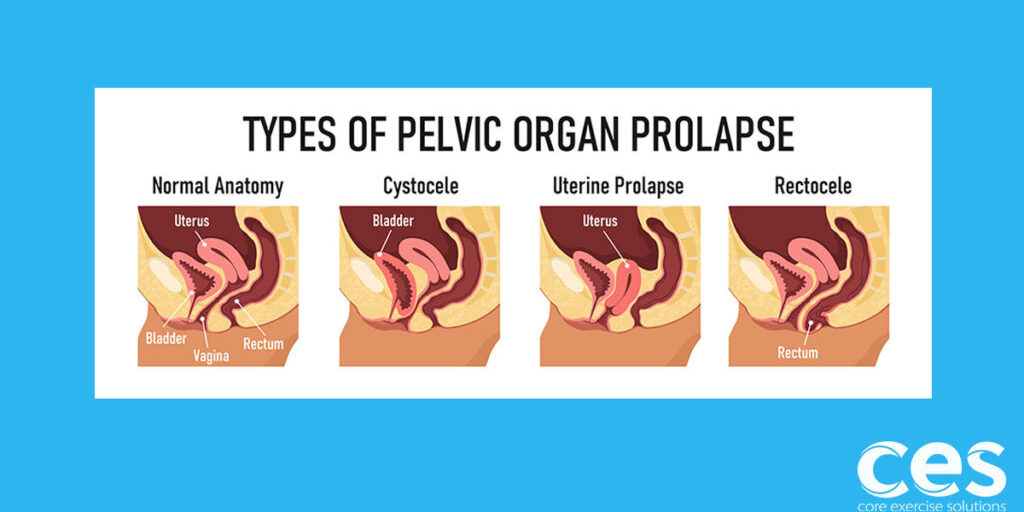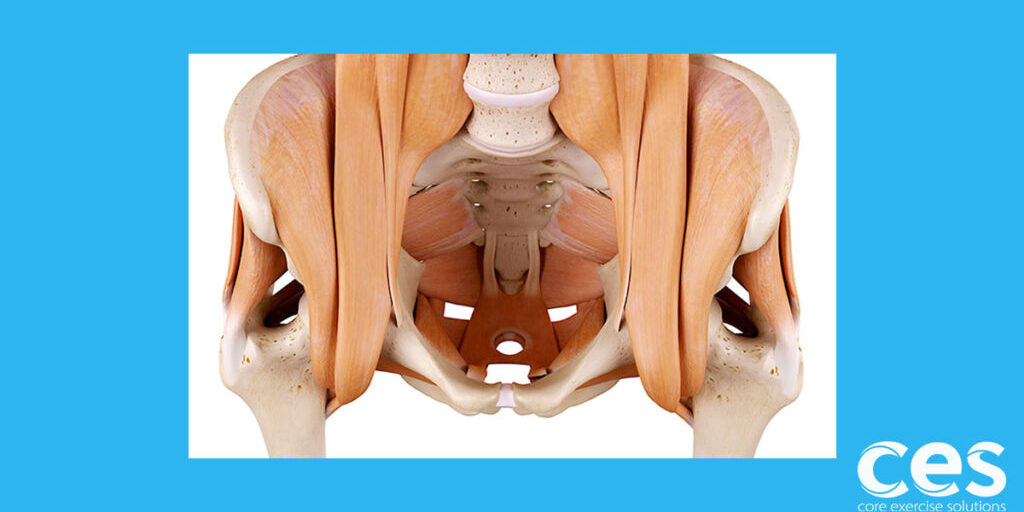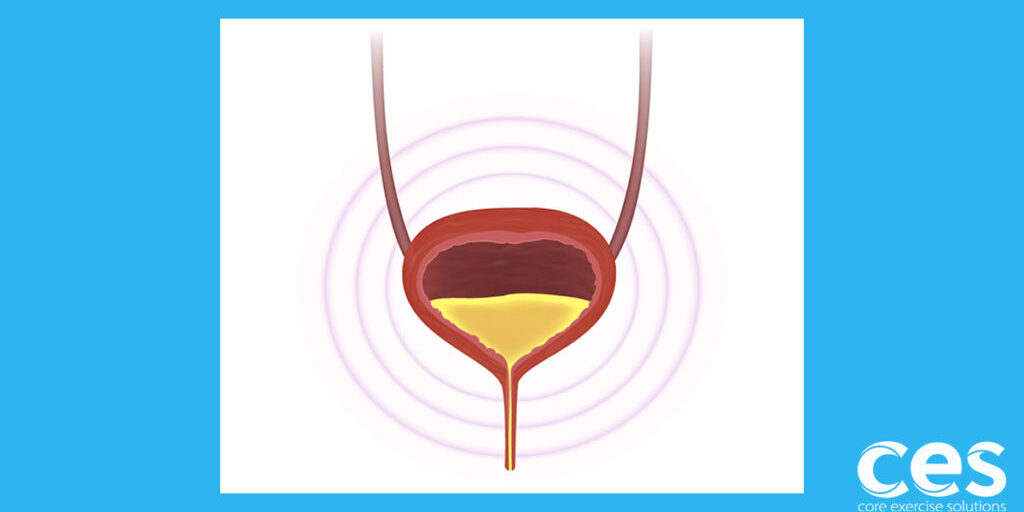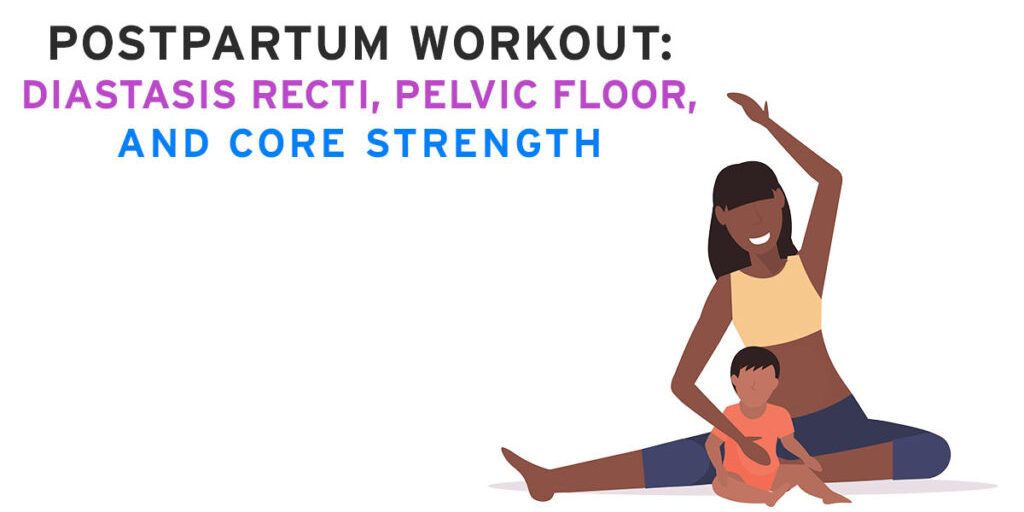The pelvic floor can be a very personal, sensitive topic, but if handled the right way, it can be life changing for your client. The more you know, the more comfortable and confident you will come across. This gives your client tremendous confidence in discussing it with you. It’s a topic that should be talked about more, especially in the area where exercise is concerned!
Below are a few key questions that you should ask every postpartum client. These questions ensure that you will keep their pelvic floor safe during exercise. No one wants to cause pelvic organ prolapse on their watch, and in a lot of cases, your workout design can help fix most pelvic floor issues! Trust me, if a client stops having to run the bathroom, they will thank you forever. I think asking them outright is best, but you can also send the questions home for them to think about. Sometimes the idea of talking about the pelvic floor takes a little warming up.
Question #1. Start by explaining that the pelvic floor is a set of muscles that helps to support the body, just like any other set. I love it when I see fitness providers flipping open the anatomy book so their clients can view the muscles from the inside down. This makes it less “personal” and more structural. Then, explain how “if the muscles are tight, they can’t contract well”. Using your biceps to explain tightness is easy and a very visual example that helps it hit home.
If you contract your biceps and hold it contracted, it would be really hard to make the muscle stronger because you’re holding it in a shorted position. To strengthen the bicep you must be able to relax the muscle, lengthening it, to then get a full, big contraction, like doing a biceps curl. Everyone gets that.
The pelvic floor is exactly the same. When it’s tight (think kegel all the time), it can’t get a good contraction. You may want to say something along the lines of, “we don’t have to discuss the details, but it would help me to know if you think your pelvic floor may be tight.” Often times women can’t tell they have tight pelvic floors. It’s a subconscious holding of tightness.
Signs of a tight pelvic floor (could be just one):
- Leaking with sneezing, coughing, jumping or heavy lifting
- Feels like you can’t get a good contraction or weak when trying to contract
- Difficult to get a full deep breath in, usually in a shallow breathing pattern
- Pain with sex or insertion of a tampon
- Holding a kegel will often make it worse
- SI Joint Pain, Hip Pain
It’s great to reassure the client that “what you’re feeling is really common but not normal, it’s not something you have to live with. I’m going to refer you to a good Pelvic Floor PT that I trust and we’ll also address the issue during our exercises. There are things we can do strength wise to help fix your alignment and alleviate the tightness. What we do in here will speed up your progress big time!”
Question#2. An inactive pelvic floor. The pelvic floor can get turned off, sometimes this happens from the kinetic chain and sometimes it’s simply a long pushing phase during labor. The muscles just take a little vacation and need to be woken back up.
This may be an even more personal topic to talk about, but in my experience, clients will share more with their trainer or Pilates instructor than they will their doctor, so I think it’s important for you to understand and be able to ask the right questions.
Signs of an inactive pelvic floor (could be just one):
- Leaking with sneezing, coughing, jumping or heavy lifting
- Tampons falling out
- Sex “not feeling like it used to before kids”
- SI Joint Pain, Hip Pain
If your client is 100% confident they know how to contract their pelvic floor correctly, you can work on cueing them during exercise. Just a little extra cueing to remind them, “oh, my pelvic floor should be tightening during this part of the motion when I exhale” will sometimes be all they need! Learning to breathe properly during exercise is critical for the pelvic floor.
Sometimes cueing is not enough. Sometimes they can try and contract their pelvic floor over and over again but it just doesn’t seem to be responding. First, please tell them it’s not their fault for not doing enough kegels. I have patients tell me, “I only did my kegels 10min a day, maybe I should do them 20, that’s probably it.” No, that’s not it. More of something that’s not working is not going to make it start working. Isn’t that the definition of insanity??
This is when you get to put on your fun detective hat because their pelvic floor issue is NOT a pelvic floor issue. You have to look everywhere else in the body to figure out what’s causing the pelvic floor not to work. Spotting deficits in strength and muscle balances is a really fun part of the job!
Our bodies muscles work together, and if one part is not working correctly, say the hip is not moving correctly in the socket, the pelvic floor may either work too much resulting in tightness on one side or it may shut down completely. The cause isn’t the pelvic floor, it’s the hip.
The pelvic floor gets blamed for a lot, and in not all but a lot of cases, that’s why KEGELS DON’T HELP! In this course we look at everything else in the body that causes the pelvic floor to not function correctly. You’ll look at core strength, diaphragm function, breathing patterns, adductors, iliacus, glutes and arch strength, each can control how the pelvic floor functions. As you’re seeing, a great exercise program can make or break the pelvic floor.
Question #3. Feeling “something” in the pelvic floor. Studies show that up to 50% of women have Pelvic Organ Prolapse. I find a lot don’t know it, so it’s really important to screen for it. There are several factors that cause prolapse, but a lot of the stories I hear start with “I tried this exercise and then I felt it after.” That is usually followed by tears. This is heart breaking because a lot of prolapse can be prevented, especially from worsening!!!!
Now, they may have gotten a prolapse from pregnancy or childbirth, and with the right kind of exercise cueing, they can keep it from ever getting worse or needing surgery, and in some cases, it can even get better! With the wrong kind of exercise cueing, you can make prolapse worse.
Did you know that 1 in 3 mesh surgery repairs for prolapse FAIL within 7 years? Surgery outcomes can be scary. Prevention and the right exercise is key for a safe, healthy pelvic floor.
That’s why it’s important for you to know off the bat if they have prolapse. The best way to ask is to word it simply and professionally, “Do you ever feel anything in your vagina? Particularly after exercise, a cold where you’ve been coughing a lot or right before your period?” These are the most common times for prolapse to show itself. Many women describe it as “feeling something that wasn’t there before. Like a golf ball.”
Just know that prolapse grades can fluctuate. Which is awesome!!!! Just because someone gets diagnosed with a grade 3 doesn’t mean that it’s their life sentence. With the right help they can experience healing, which is a much better option than surgery!!
One of the biggest things we talk about throughout the class is pressure. Learning how to manage pressure to not bear down. This is critical for prolapse, as is making sure all the muscles around the pelvic floor are firing correctly.
I do not believe there are any “unsafe” exercises for prolapse. There is only poor programming, poor coaching on technique or too much too soon.
With the right knowledge, you can change your client's life, often in ways they didn’t even dream possible. Pelvic floor issues are not something they have to “live with”.
Interested in expanding your knowledge and comfort level while earning CEUs? Join me and dive deeper into understanding how you can help clients perfect their pelvic floor.
Want to learn more about becoming certified as a Pregnancy and Postpartum Corrective Exercise Specialist? Find out all the details here.
Perfect for the Physical Therapist, Trainers, or Pilates Instructors that want to incorporate the pelvic floor, diastasis, SI joint and low back recovery into their programs. The class is packed with great new exercises that you can implement immediately!
Working with pregnant and postpartum clients/patients?
This 6-part course offers key takeaways on breathing, pelvic floor strengthening and diastasis recovery. Sign up and start learning today!
Related Articles
- « Previous
- 1
- …
- 3
- 4
- 5


